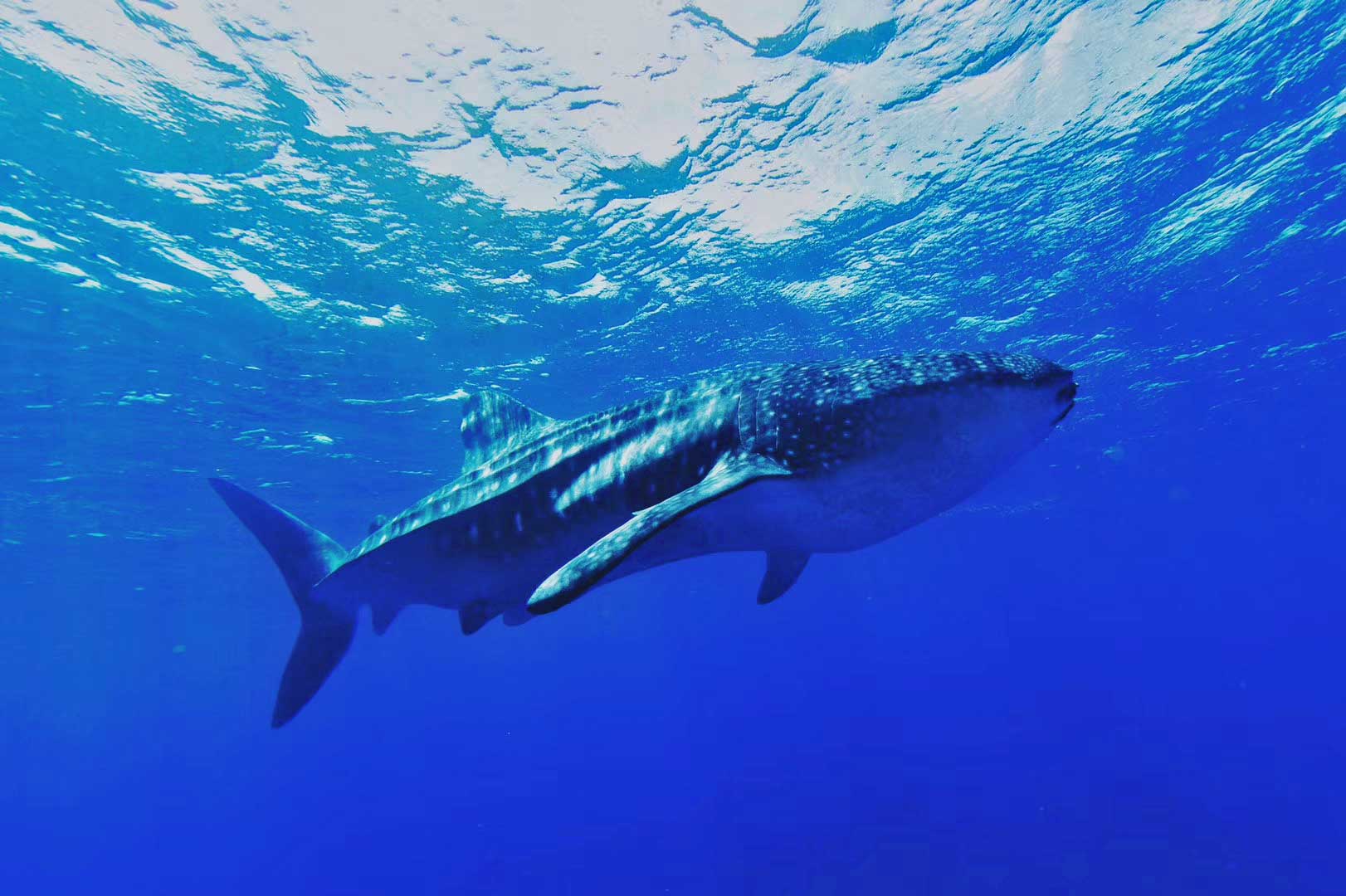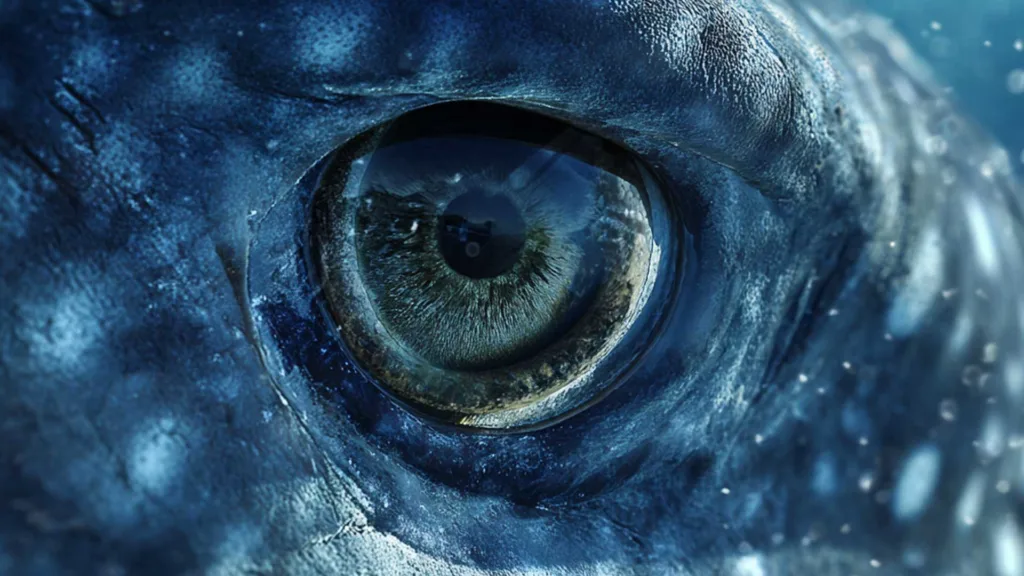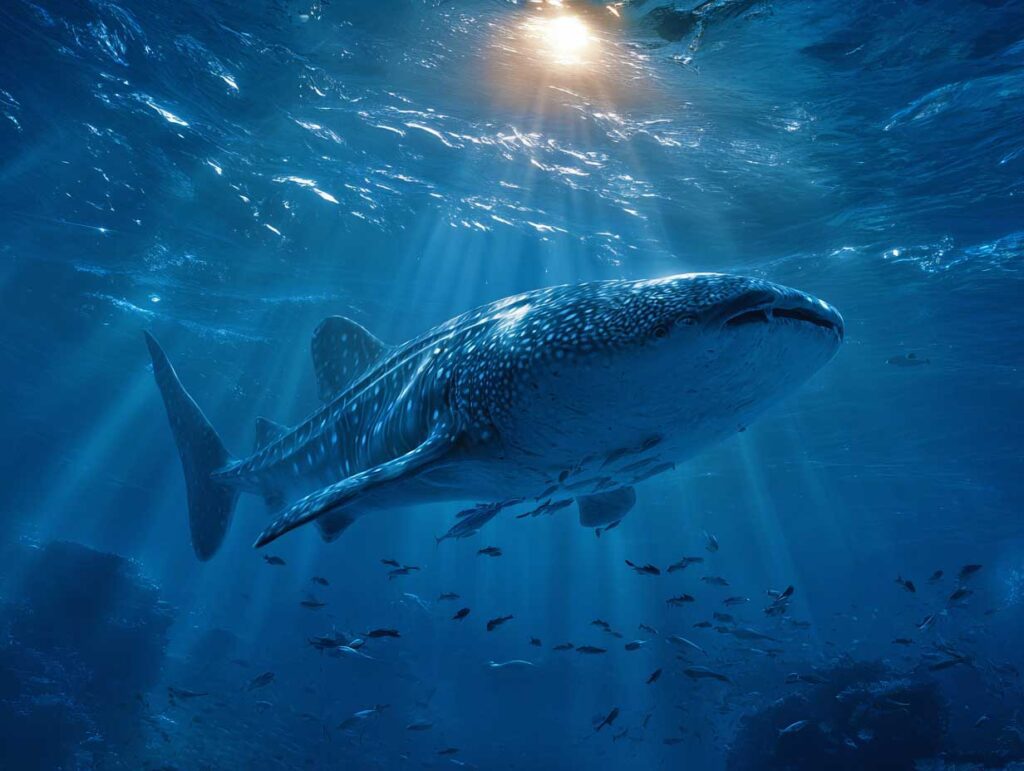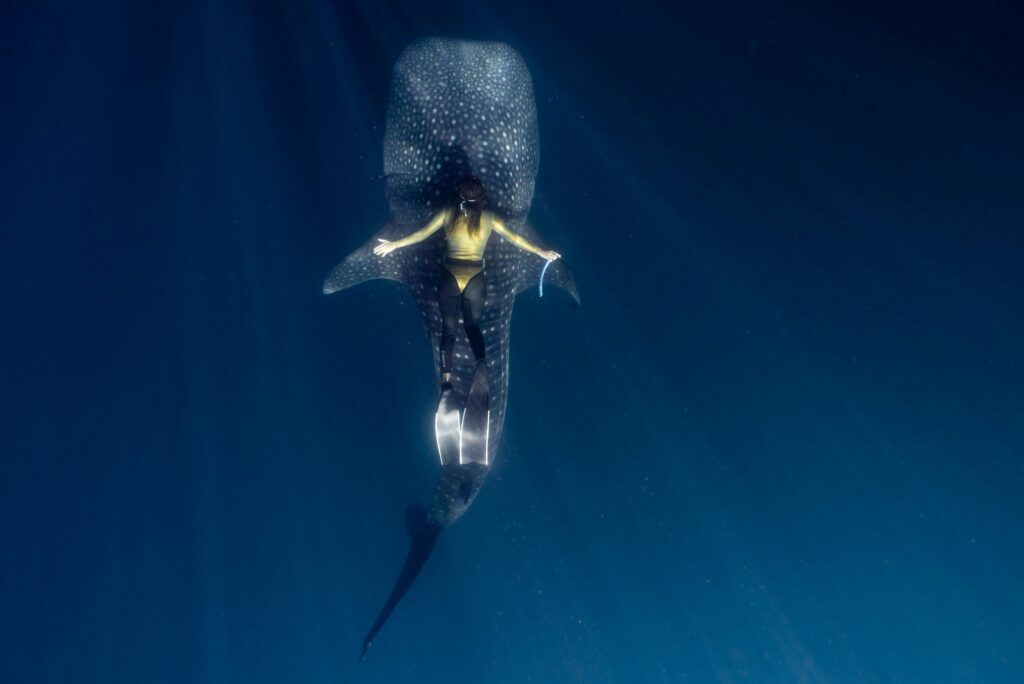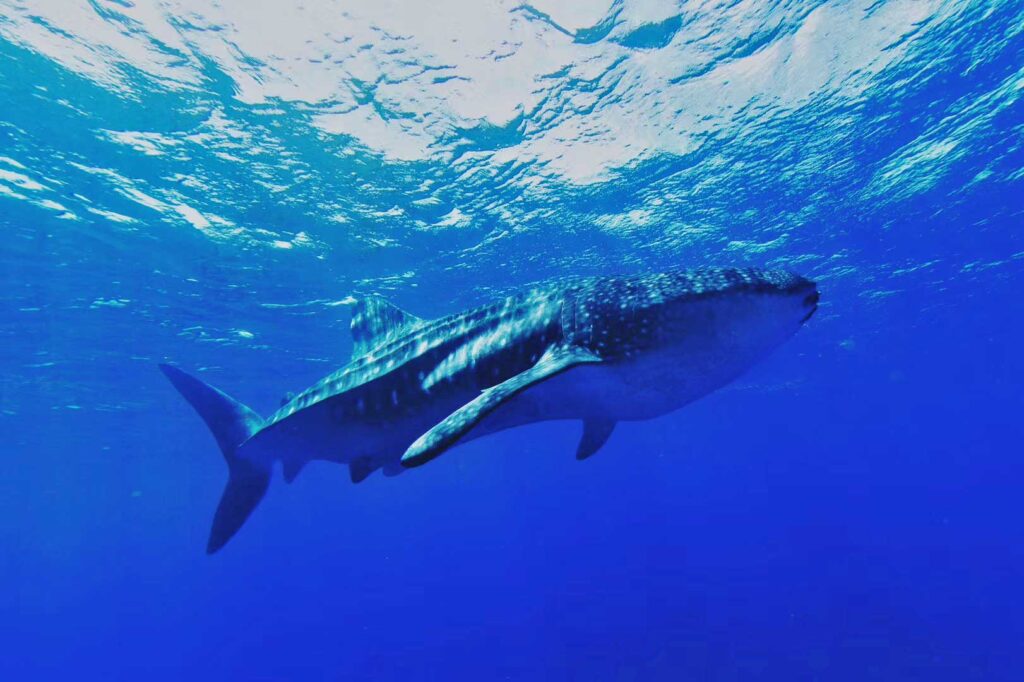
Whale sharks were long thought to be oviparous. Like many other fish, whale sharks also lay eggs. A female whale shark can store sperm for many months. It can have babies at different stages of development. They are ovoviviparous, meaning that their eggs hatch inside of them before they are born alive.
Dr Gudger, a renowned expert on whale sharks, stated (Gudger, 1935) that “It is my judgement that the whale shark will be found to be viviparous—i.e., a live bearer. The young, when born, must be a good size, too large to be hatched from a shelled egg extruded into water. The just-born young must be at least three to five feet long—perhaps as much as eight to ten. Quien saba!”
Earlier there were theories concluding that the whale sharks are oviparous. Southwell’s observation (1912-13) was based on a specimen taken at Dutch Bay, on the west coast of Sri Lanka, in which he found “a very ripe ovary, an oviduct full of eggs, 16 cases counted, and the same form as in dogfish.” However, based on Southwell’s observations, Bigelow and Schroeder (1948) suggested the possibility of the development stage of Rhiniodon being ovoviviparous. He changed his views on the same grounds that Gudger (1952) concluded oviparity was a possibility.
